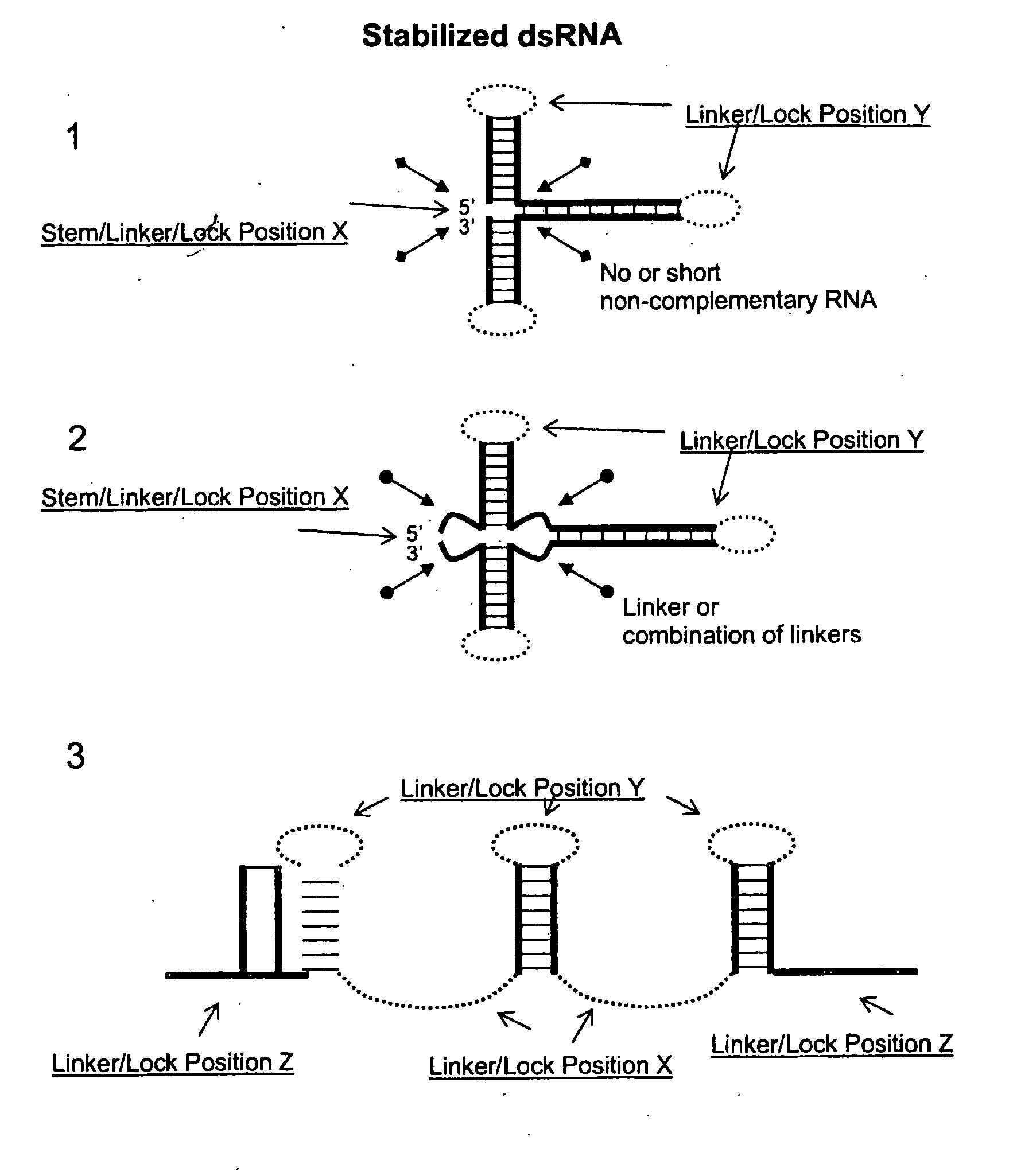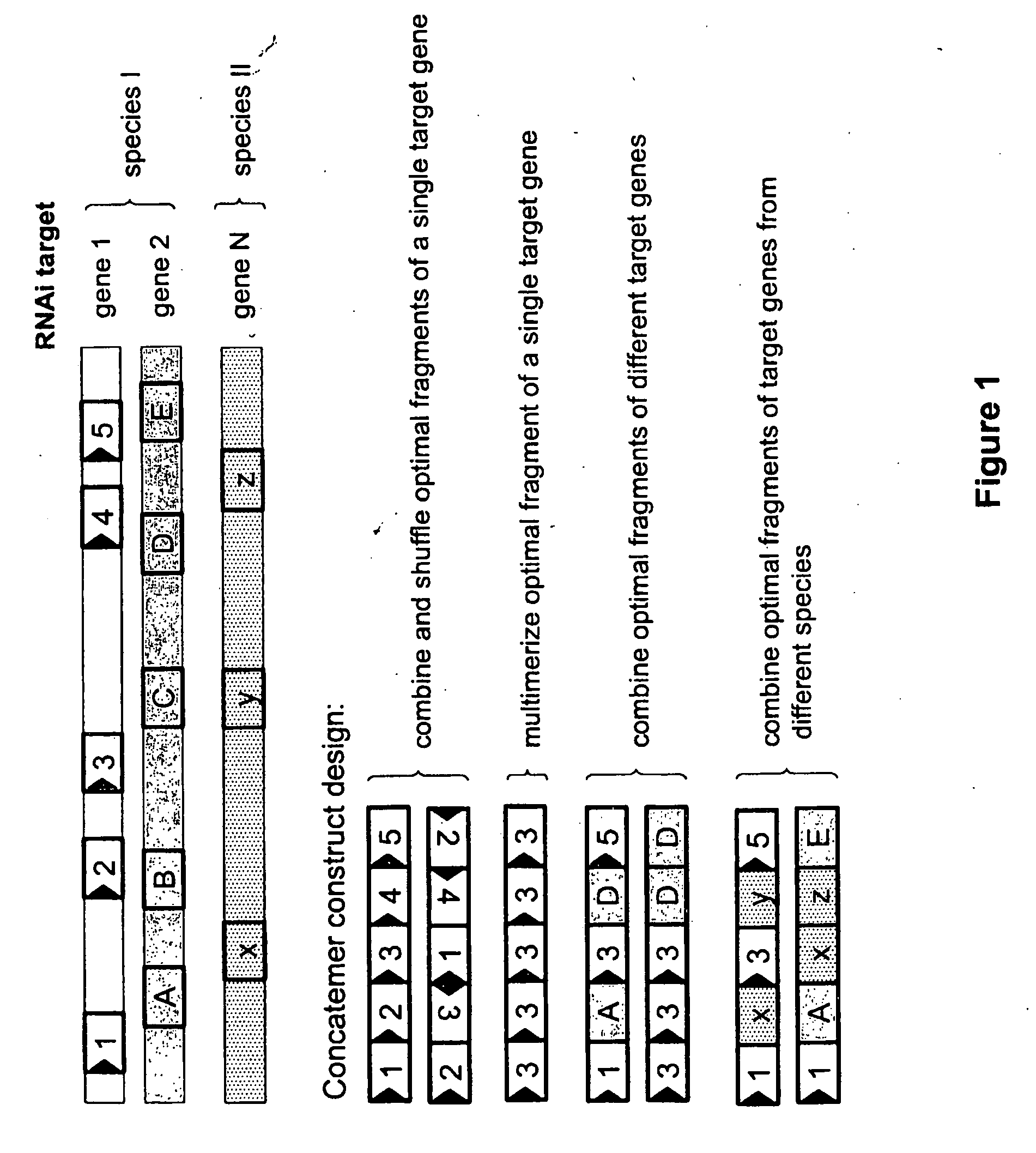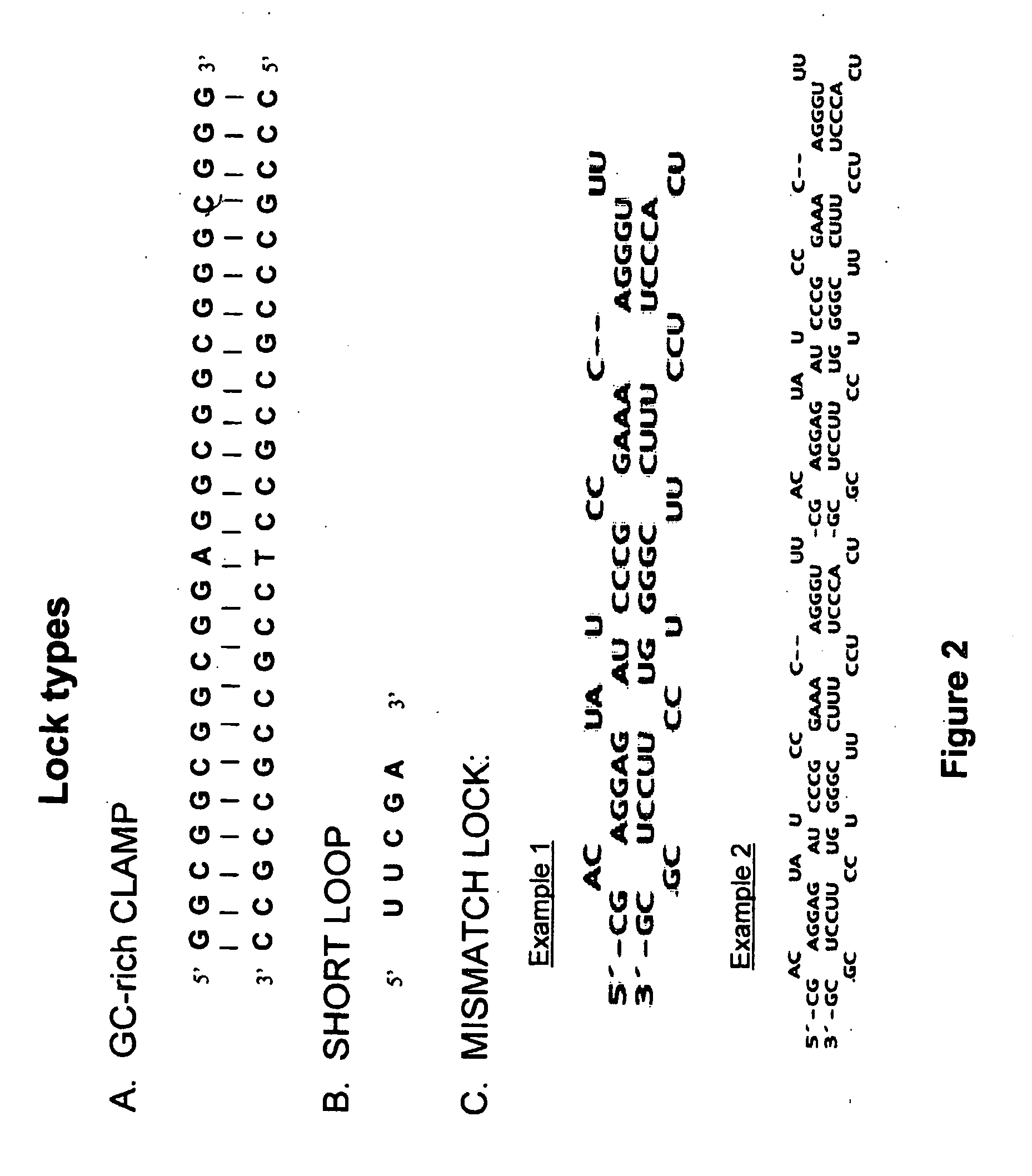Rna constructs
a technology of rna and constructs, applied in the field of double-stranded rna (dsrna) mediated gene silencing, can solve problems such as processing, and achieve the effects of efficient uptake of dsrna, effective gene silencing, and efficient uptake of long dsrna
- Summary
- Abstract
- Description
- Claims
- Application Information
AI Technical Summary
Benefits of technology
Problems solved by technology
Method used
Image
Examples
example 1
Efficacy of dsRNA in Nematodes is Length Dependent
[0238]Short interfering RNAs (siRNAs) mediate cleavage of specific single-stranded target RNAs. These siRNAs are commonly around 21 nt in length, suggesting that siRNA expression in the host causes efficient and specific down-regulation of gene expression, resulting in functional inactivation of the targeted genes. However, there are indications that in invertebrates (e.g. free living nematode C. elegans and plant parasitic nematode Meloidogyne incognita) the minimum length of dsRNA fed to the invertebrate needs to be at least 80-100 nt to be effective, possibly due to a more efficient uptake of these long dsRNA fragments by the invertebrate.
[0239]Similar results were now observed for the plant parasitic nematode Meloidogyne incognita (SEQ ID NO: 43). dsRNA fragments of the M. incognita beta-tubulin genes with different lengths (105 bp, 258 bp and 508 bp) were produced in vitro (T7 Ribomax Express RNAi System, Promega) using the spec...
example 2
Protection of dsRNA
2.1. Protection Against RNAse III Dicing by IRES Sequences
[0241]In this example, a dsRNA fragment was flanked on both sites by a lock sequence exhibiting extensive secondary structures. The secondary structures at the termini delayed process ng of the dsRNA by two RNase III enzymes, human Dicer and E. coli RNase III.
[0242]As protecting lock sequences, the internal ribosome entry sites (IRESes) from the encephalomyocarditis virus (EMCV) and Upstream of N-ras (UNR) were used. IRESes form complex secondary structures with multiple stem-loop regions, to which proteins can bind such as ribosomes and the polypyrimidine tract binding protein (PTB). In a plant cell the EMCV IRES may protect linked dsRNA from dicing by its secondary structure as well as by binding cellular factors, thereby sterically preventing access of Dicer to the dsRNA.
[0243]The IRES sequences used in this example were a 559-nt fragment upstream of the EMCV viral polyprotein coding sequence (Genbank ac...
example 3
Design and Cloning of dsRNA Concatemer Constructs Efficient for Pest Control
[0251]Concatemer constructs were designed to comprise different combinations of dsRNA fragments which target different target genes; or which target a different target sequence from such target genes, which target sequences have the same or different lengths; or which repeat the same sequence multiple times.
[0252]The dsRNA concatemer constructs of the invention have a total length of less than 700 bp, and preferably range from about 250 bp to about 500 bp. Preferably the length of the dsRNA concatemer construct is as such that the corresponding ssRNA is capable of forming efficiently a hairpin dsRNA.
[0253]The format of the concatemer construct of the invention may be a dsRNA per se or may be a hairpin dsRNA. A dsRNA per se or a hairpin may be made by in vitro transcription or by recombinant expression systems.
TABLE 3The following concatemer constructs were cloned.TargetFigure and / orNamegene**descriptionSEQ I...
PUM
| Property | Measurement | Unit |
|---|---|---|
| incubation time | aaaaa | aaaaa |
| incubation time | aaaaa | aaaaa |
| incubation time | aaaaa | aaaaa |
Abstract
Description
Claims
Application Information
 Login to View More
Login to View More - R&D
- Intellectual Property
- Life Sciences
- Materials
- Tech Scout
- Unparalleled Data Quality
- Higher Quality Content
- 60% Fewer Hallucinations
Browse by: Latest US Patents, China's latest patents, Technical Efficacy Thesaurus, Application Domain, Technology Topic, Popular Technical Reports.
© 2025 PatSnap. All rights reserved.Legal|Privacy policy|Modern Slavery Act Transparency Statement|Sitemap|About US| Contact US: help@patsnap.com



